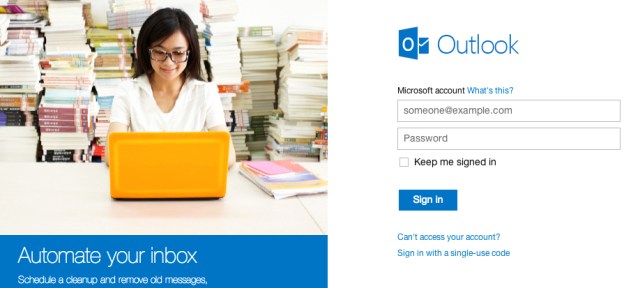 If you’re a Hotmail/Outlook.com user and run several accounts, you may have long been using its ‘linked accounts’ facility, which allows you to manage multiple accounts after signing in to just one of them.
If you’re a Hotmail/Outlook.com user and run several accounts, you may have long been using its ‘linked accounts’ facility, which allows you to manage multiple accounts after signing in to just one of them.
It’s a pretty handy feature as it means you don’t have to waste time signing in to each one – all it takes is a couple of clicks and you’re in another of your accounts. Trouble is, Microsoft is about to dump it.
“Over the next couple months, we will stop supporting linked accounts and instead help people move to a more robust and secure way of managing multiple email addresses: aliases,” Microsoft’s Eric Doerr wrote in a post on the Outlook blog on Monday.
Aliases are linked to a single Microsoft account – so require only one login and password – and allow users to send and receive messages using multiple email addresses. Users of linked accounts who want to consolidate their email will need to set up email forwarding to their primary account.
The ‘bad guys’
Explaining the reasons for its decision to bring the curtain down on linked accounts, Doerr said in his post that while the feature is handy for many users, it also “benefits the bad guys,” as linking accounts means that hackers who gain access to one can easily explore all the others. The problem, Doerr said, is that while many users were careful to manage and update the security settings of their primary account, they would often neglect their secondary accounts, making them more vulnerable to hackers. Once a hacker gained access to a linked secondary account, they could easily gain access to the more important primary account. With that in mind, Microsoft wants users to operate from a single account.
Explaining why a single account was the way forward, Doerr wrote: “Your email address is often how you sign into the account that is your ‘digital identity.’ For example, your Microsoft account unlocks a broad array of experiences ranging from Windows to Xbox to Office365 to Outlook.com and more. Increasingly, devices allow people to connect their various accounts (Microsoft account, Facebook, Twitter, Apple ID, etc.) to their devices and have it all just work.
“That means that you want to have one Microsoft account that lets you light up your Microsoft devices and services with your stuff: your gamer score, your email inboxes, your calendars, your people, and your files, as well as to connect to all the networks you care about. That’s certainly the system we’re building, and why we’ve designed aliases to make it easy to have multiple email addresses (for receiving and sending) connected to a single Microsoft account.”
Microsoft will be sending out an email to Hotmail/Outlook.com users in the next few days explaining what action you need to take if you’re currently using the feature.


